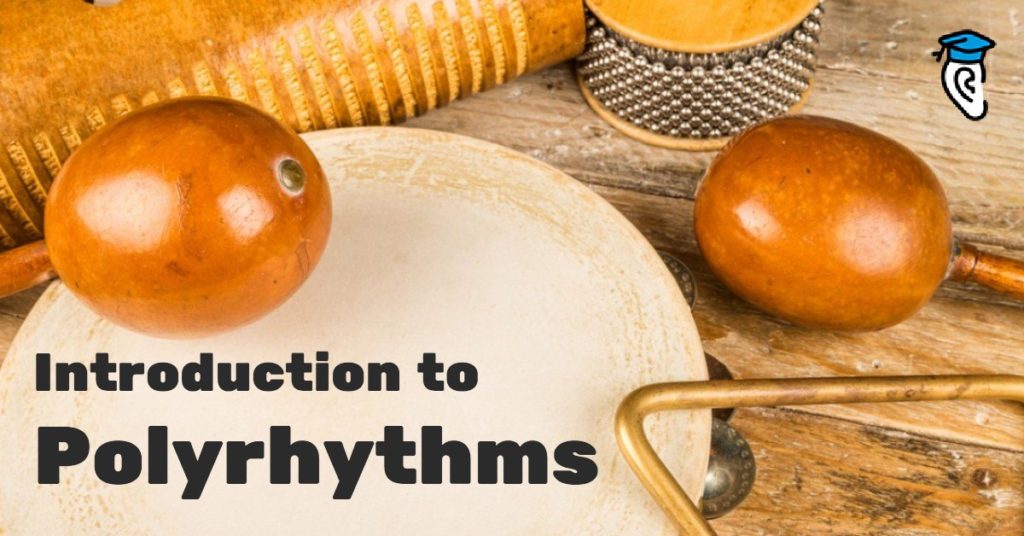As a musician, you are probably familiar with common rhythms that involve 8th notes, triplets, 16th notes and quarter notes. You may play by ear, read music, or do a combination of both, but chances are that you are very familiar with common rhythms used in Western music like this:
Meghan Trainor’s “All About That Bass”
In Meghan Trainor’s “All About that Bass” you can hear a familiar 8th note rhythm, basic bass line, and hits on 2 and 4.
In many parts of the world, like Ghana or India, rhythms are much more complex and delve into polyrhythms and syncopation. Depending on your musical style, you might have encountered these beats if you are a drummer or pianist:
Drummer Christian Muhr demonstrates complicated polyrhythms on the drumset.
Now before you exclaim that your mind is entirely blown away and that you could never master such complicated rhythmic insanity, realize that every musician can master the polyrhythm with practice. We all start simple and with time, you, too, can amaze your friends with your rhythmic prowess.
But first, let’s start with the basics.
What is a Polyrhythm?
The simplest definition of a polyrhythm would be playing more than one rhythm at the same time causing a conflict, like a triplet being played at the same time as an 8th note:
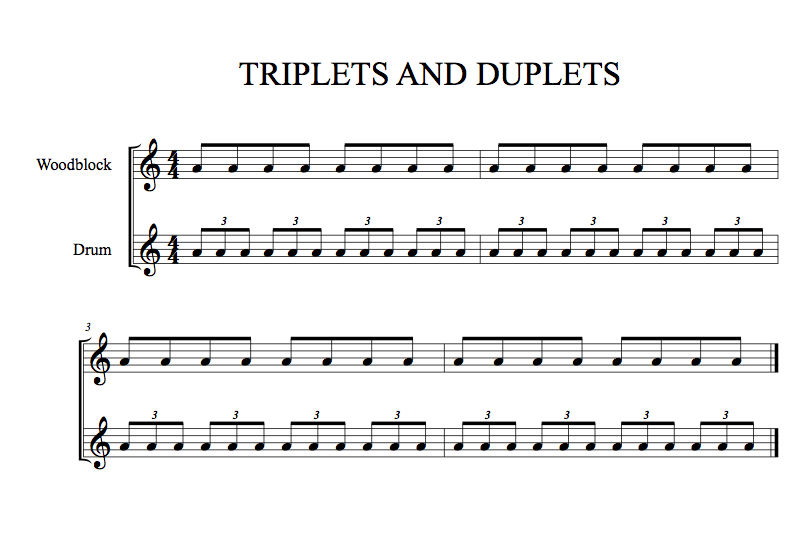
Compare this example to quarter notes played against triplets.
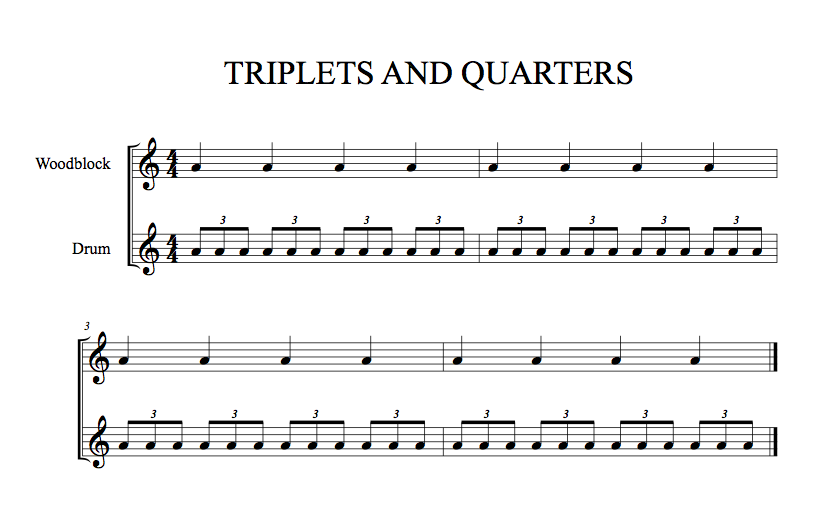
You can hear the conflict between the triplets and 8ths in the first example when compared with rhythm in Example 2.
You might recognize this pattern in the famous Christmas song “Carol of the Bells”:
Carol of the Bells by Celtic Women
As mentioned earlier, many world cultures embrace complex polyrhythms, often creating entire cycles based on 8ths and triplets and even groups of five or seven. In addition the meters of the rhythmic cycle may stray from Western music’s traditional 4/4 time, and instead delve into 7/8, 5/16, 12/8 and more as the rhythms become increasingly complex. Listen to this demonstration of traditional African polyrhythms:
Don Swanson and Baba Ayo Adeyemi improvise ancient African polyrhythms.
How to Count a Polyrhythm
There are several methods for counting polyrhythms. Some rely on traditional counting methods, using numbers and syllables like “&” or “ah” for counting. You can learn about counting rhythms out loud in our Talking Rhythm series.
Other methods will use common phrases to count out a polyrhythm. Some methods rely on complex mathematical permutations. For simplicity’s sake, we will use a simple counting method. If you are interested in more complex counting methods, please check out these helpful sites: Understanding Polyrhythms by Kevin Barrett and Drum Lessons and Polyrhythm
You can practice 3:2 polyrhythms by simply saying “Hot Cup of Tea”.
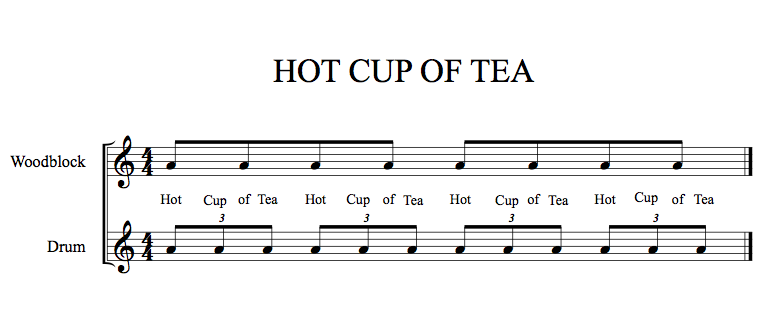
We will explore two common polyrhythms 3 against 2 (3:2) and 4 over 3 (4:3). For these rhythms, unless you are a seasoned drummer, it is often easiest to learn them by ear with a metronome. You may find that you already incorporate polyrhythms in your music during solos and improvs, but just did not realize what they were.
Exercise 1: Counting Polyrhythms: 3 against 2
In this example you will count a basic 3 against 2 polyrhythm using “1-and-ah-2, 2-and-ah-2, 3-and-ah-2, 4-and-ah-2.”
- Set your metronome to 60 BPM.
- Listen to the audio example several times, internalizing the rhythm.
- Practice counting the rhythm out loud.
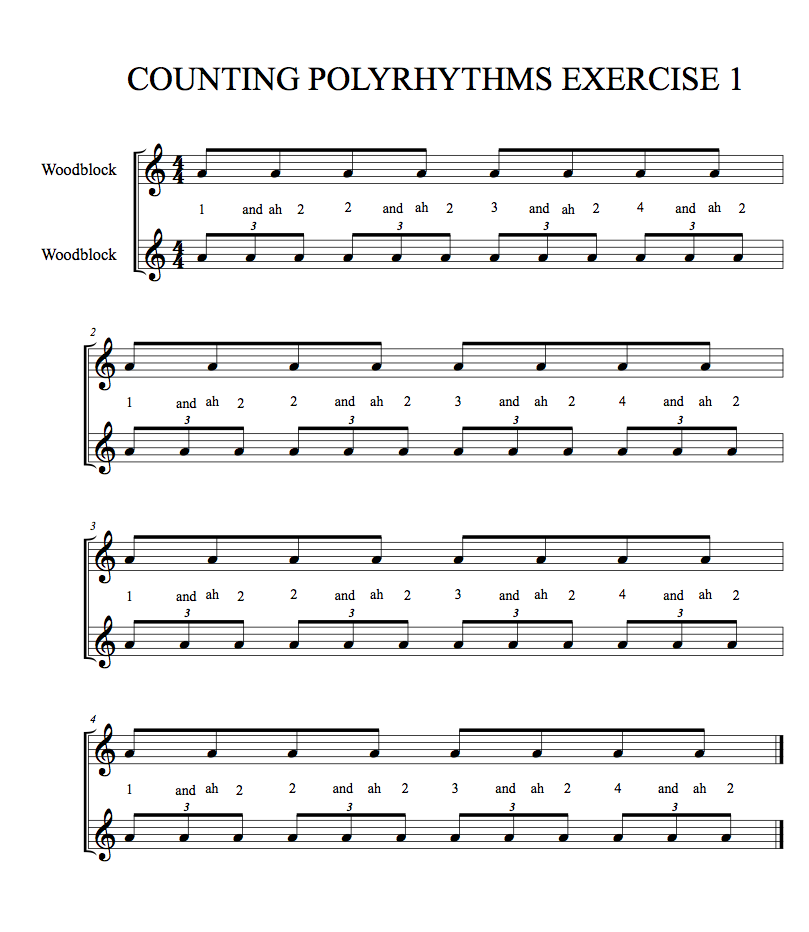
Exercise 2: Counting Polyrhythms: 4 against 3
Another common polyrhythm example is four against three. Listen to the example and internalize the rhythm.
In this example you will count “1-ah-2-and-3-and” for each beat like the example.
- Set your metronome to 60 BPM.
- Listen to the audio example several times, internalizing the rhythm.
- Practice counting the rhythm out loud.
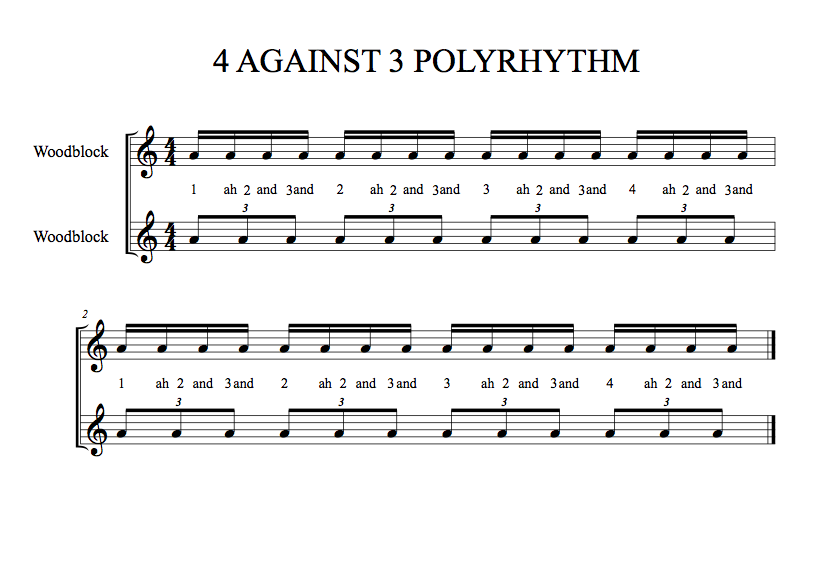
Here’s an interesting visual demonstration:
Practicing 4:3 rhythms
Put it into practice
Learning how to internalize polyrhythms takes some time. For percussionists who pretty much eat, drink, and sleep rhythm, learning complex polyrhythms will not be difficult.
For the rest of the musicians out there, take the time to practice these simple exercises and internalize the rhythms. Once you are comfortable, start incorporating the rhythms into your practice, solos, and improvisations.

